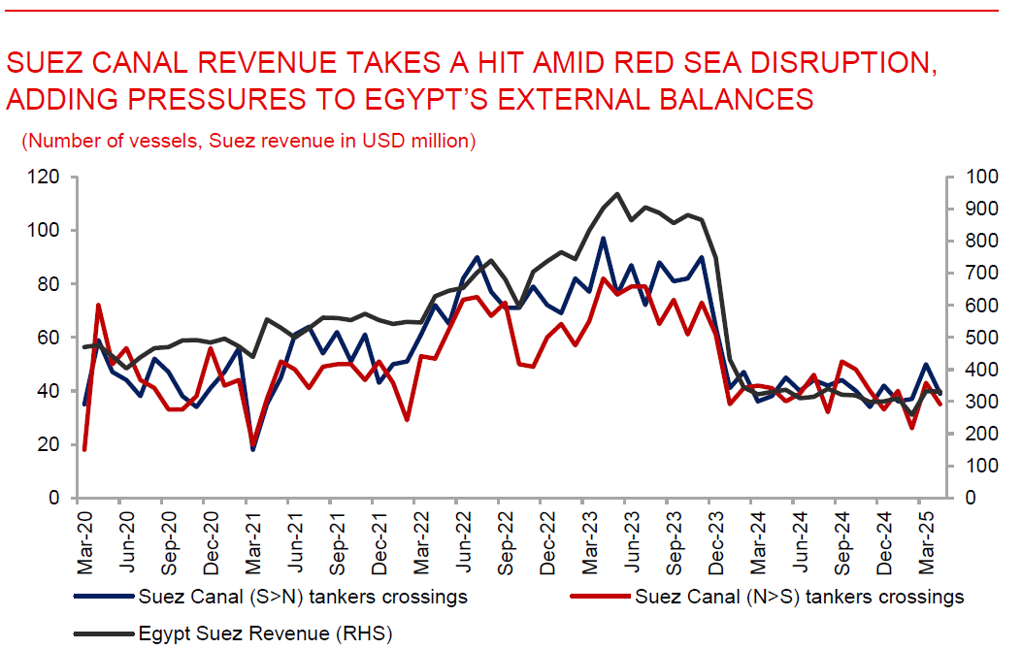To read the full report, please download the PDF above.
Middle East Daily
SOOJIN KIM
Research Analyst
DIFC Branch – Dubai
T: +44(4)387 5031
E: soojin.kim@ae.mufg.jp
MUFG Bank, Ltd. and MUFG Securities plc
A member of MUFG, a global financial group
Middle East Daily
COMMODITIES / ENERGY
Oil edges higher amid tight near-term market signals and inventory focus. Oil prices rose slightly after a two-day decline, with Brent approaching USD69/b and WTI near USD67/b, as traders weighed signals of short-term market tightness ahead of official US inventory data. Brent’s prompt spread remains in strong backwardation at over 90 cents, indicating supply concerns for immediate delivery. A preliminary US industry report showed a modest crude stockpile increase, while distillate stockpiles, including diesel, remain historically low, adding to market focus. Oil has continued to climb in July, supported by steady demand and despite headwinds from expanded OPEC+ output and ongoing trade tensions triggered by US tariff announcements. While some forecasts suggest limited upside due to rising global inventories, most of the buildup has occurred in markets less influential on benchmark futures pricing, keeping Brent above key support levels for now.
Gold rises as Trump tariff actions sustain haven demand. Gold edged higher to around USD3,330/oz after President Trump’s latest tariff moves, including a 19% duty on Indonesia and looming levies on pharmaceuticals and semiconductors, revived market concerns over a global trade war. The haven asset regained ground after dipping on 15 July, when a subdued US inflation report led to speculation that the Fed may pause rate adjustments. Despite recent fluctuations, gold remains up over 25% this year, buoyed by persistent trade and geopolitical tensions, as well as strong demand from ETFs and central banks.
MIDDLE EAST - CREDIT TRADING
End of day comment – 15 July 2025. A rollercoaster day following the renewed UST sell off despite better inflation data. Ahead of the CPI print the street was squaring positions, seeing an increased amount of dealer request relative to overall volumes. Post CPI cash traded higher following relief in UST and risk markets about the benign number. That however gave way to renewed UST weakness followed by cash selling from account side. On balance spreads are still a touch tighter today, IG sovereign closing -1/-2bp. QATAR 49s was the most traded bond going out -0.125pt/-2bp. In higher beta sovereign OMAN was again a notable outperformer, seen early morning buyers in long end bonds and only with the UST sell off seen a bit of profit taking, 48s closing +0.875pt/-10bp. In quasis every bond seems to have its own technical and it was overall mixed, in the afternoon ADNOCM, ADQABU and QPETRO where the ones being sold whereas the short base in MASDAR or MUBAUH are keeping those curves relatively shielded, on average quasis closing -2bp. 30y UST are starting to break 5% and into the close RMs are starting to sell long end bonds. Whilst we closed broadly tighter in spreads, the market starts to feel heavy again with only some short covering providing support. All eyes on DM rates markets for now.
MIDDLE EAST - MACRO / MARKETS
Egypt’s economy stabilises under IMF program, but structural reforms remain crucial. In its fourth review of Egypt’s Extended Fund Facility (EFF), the IMF noted clear signs of macroeconomic stabilisation, including a rebound in GDP growth to 3.5% in early FY2024/25 and a decline in inflation from a peak of nearly 38% in 2023 to 13.9% in April 2025. However, external vulnerabilities remain significant, with the current account deficit widening due to a sharp drop in Suez Canal revenues, down USD6bn from Red Sea disruptions, and continued refugee inflows from Sudan, which exceeded 600,000 by end-2024. While the IMF welcomed recent policy improvements, it stressed that lasting progress hinges on accelerating structural reforms. The approval of an additional USD1.3bn under the Resilience and Sustainability Facility (RSF), alongside the USD1.2bn EFF disbursement, gives Egypt needed financial support to pursue these reforms and build long-term resilience.
Saudi inflation rose to 2.3% y/y in June, driven by housing costs. Saudi Arabia’s inflation rose to 2.3% y/y in June from 2.2% y/y in May, reflecting continued inflationary pressure primarily driven by housing-related costs. According to the General Authority for Statistics, the housing, water, electricity, gas, and other fuels category jumped by 6.5% y/y, largely due to a sharp 7.6% rise in villa rental prices, a trend that has been persistent over the past year amid ongoing supply-demand imbalances. The rise in headline inflation comes as Saudi Arabia continues to recalibrate spending priorities under Vision 2030 and advances housing sector reforms to enhance affordability and access. The data underscores the importance of monitoring domestic inflation dynamics, especially as global uncertainties and domestic reforms reshape economic conditions in the Kingdom.

